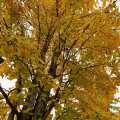no impairment是否违反大前提?
While uncommon in children, discitis is an infection of inflammation involving the intervertebral discs or the vertebral end plate. The average age at diagnosis is 2–8 years old. Discitis has a gradual onset, with the presenting symptoms being back pain and persistent pain at nighttime [75]. Diagnosis is confirmed with narrowing of the intervertebral disk space seen on radiographic imaging and increased uptake of Technetium Tc 99 in the discs on bone scan [76]. Stapholococcus aureus and K. kingae are the pathogens most commonly seen on disk aspiration. Laboratory studies are notable for increased inflammatory markers, including ESR and CRP levels [77]. Varying degrees of neurologic impairment were seen across studies, from no impairment [78] to decreased muscle tone, muscle weakness, and deep tendon reflexes [76]. Treatment with antibiotics, however, remains controversial. Long-term follow-up with these patients shows that the outcomes are favorable, but this condition requires rigorous conservative treatment and inpatient therapy within a specialized pediatric orthopedic care ward.
虽不常见,但儿童也可发生累及椎间盘或椎体终板炎症感染的椎间盘炎,平均诊断年龄2-8岁。椎间盘炎逐渐起病,症状为腰痛和夜间持续性疼痛[75],可通过X线片上观察到的椎间隙变窄和骨扫描上椎间盘摄取的Tc 99增加来确诊[76]。金黄色葡萄球菌和K. kingae是椎间盘穿刺中最常见的病原体。实验室检查表明炎症标志物(包括血沉和CRP水平)增高[77]。在各种研究中都可以看到不同程度的神经损伤,从无损伤[78]到肌肉张力降低、肌肉无力和深肌腱反射[76]。然而,使用抗生素治疗仍然存在争议。但对这些患者的长期随访显示,使用抗生素治疗结果是有利的,但这种情况需要严格的保守治疗 无效 和专门的儿科骨科监护病房的住院治疗。
no impairment(无损伤)是否违反大前提(Varying degrees of neurologic impairment 不同程度的神经损伤)
最后编辑于 2022-10-09 · 浏览 977
















































